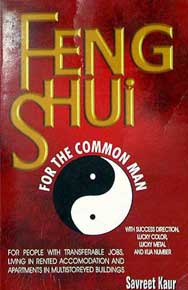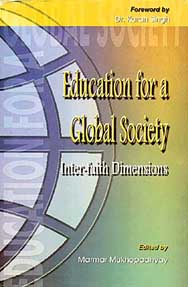|
India is rich in mythos as illustrated by our Puranas, the
Jain and Buddhist texts etc. Narula has drawn from Bhagvata
Mahapurana. The tales are interesting. However, one would
have preferred the narrative to be a bit racy and free of
ponderous prose. For example, phrases like
"Ambareesha`85felt discomfited by such a gesture" or
"`85obtrusion of the evil" [p.39] force the reader to
go for the dictionary a bit too frequently. Or the sentence on
page 69, "Foliage danced in the breeze and the myriad
flowers growing wild and some tended in proper beds" smacks
of either careless editing/proofreading or inelegant sentence
construction. Narula fails to mention that "Anshuman"
[p.73] is Bhageerath’s tale, thus confusing the uninitiated.
He provides neither context to nor explanation for the
narrative. And whose wife was Keshini? Then The Tale of Sage
Saubheri advocates the practice of sati, which is
both politically incorrect and in contravention of our laws.
Feng Shui
by Savreet Kaur.
Rising Sun Publication. Pages 104. Rs 100.
 Along with Vaastu,
Feng Shui has become quite popular among the urban classes.
Open any newspaper and you will come across advertisements
offering services of assorted "experts". Along with Vaastu,
Feng Shui has become quite popular among the urban classes.
Open any newspaper and you will come across advertisements
offering services of assorted "experts".
Savreet Kaur has
devoted several chapters to different human aspirations like
career, prosperity, fame, love, relationships, children,
creativity, health etc. She has also dealt with the cycle of
elements, the Yin and Yang and assorted Feng
Shui gadgets that might enable you to realise your most
coveted objectives. Ones house is divided into different
sections and each section is earmarked for a particular
aspiration like prosperity etc. Then there is a list of do’s
and don’ts for each section.
This book claims
that not only does it help you in realising your dreams but also
in avoiding perils and problems that you might face. If you are
giving it a try, best of luck to you. However, navigating the
book isn’t easy. The index shows "Love" on page 22,
when actually it is on page 27.
Education for
a Global Society
edited by Marmar
Mukhopadhyay. Shipra Publications.
Pages x+202. Rs 400.
 Technology has
certainly shrunk the world. What would have been dismissed as an
isolated event in the past is now a global concern. This was
best illustrated by the SARS outbreak in China that sent
governments across the world scampering for the panic button.
This analogy is applicable to almost all happenings – no
matter how inconsequential these might appear – in the global
village. Thus, inter-religion conflict has become more intense
as the desire to dominate others grips certain sections of
mankind. This calls for inter-faith exchange. More importantly,
it makes the provision of right education imperative. Technology has
certainly shrunk the world. What would have been dismissed as an
isolated event in the past is now a global concern. This was
best illustrated by the SARS outbreak in China that sent
governments across the world scampering for the panic button.
This analogy is applicable to almost all happenings – no
matter how inconsequential these might appear – in the global
village. Thus, inter-religion conflict has become more intense
as the desire to dominate others grips certain sections of
mankind. This calls for inter-faith exchange. More importantly,
it makes the provision of right education imperative.
Dr Karan Singh
feels that education is critical to the evolution of a global
society. It should be holistic in its approach that promotes
inter-religion intercourse. Mukhopadhyay says that in a world
that is being moulded through "ferociously destructive
powers and skills" education is the only viable defence. It
facilitates realisation of true nature of self and helps
individuals optimise their true potential to face emerging
challenges as well as prepares them for peaceful coexistence.
Sadly, today’s education puts too much stress on intellect,
ignoring the more important aspects of living, viz., values,
emotions and spirituality.
Susheela Bhan
highlights the contribution of non-aggressive creeds, like
Buddhism, Shintoism etc, and non-offensive people, like Red
Indians, Africans, Mesoamericans and others, towards making this
world worth living in. Gangrade gives us the Gandhian
perspective on education, Zena Sorabjee provides us with the
Baha’i view while Merchant dwells upon the role of inter-faith
values in education.
The various
contributors, while dwelling upon different aspects of education
in the emerging world scenario, are unanimous on the issue of
reinforcing a universal value system. Here the role of teachers
as well as related institutions becomes vital. A
thought-provoking book.
|